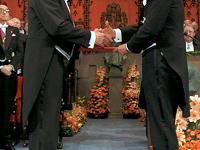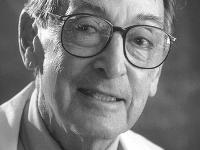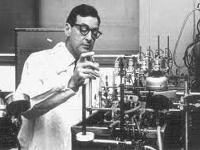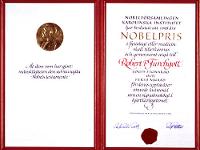The Molecule Discovery That Changed Medicine
By Office of the President | Oct 21, 2025
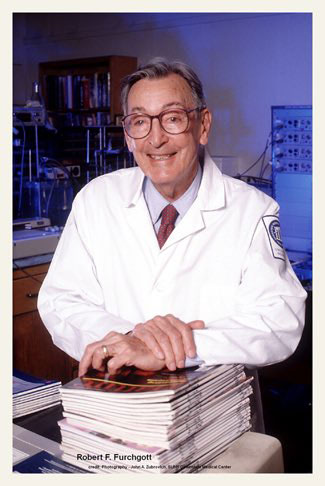
This year marks the 25th anniversary of a discovery that changed the course of medicine and represents an enduring chapter in Downstate’s history, when Downstate’s Robert F. Furchgott, Ph.D., UCLA’s Louis J. Ignarro, Ph.D., and University of Texas’s Ferid Murad, Ph.D., received the Nobel Prize in Physiology or Medicine for demonstrating that nitric oxide (NO) is a signaling molecule in the cardiovascular system. Their work revealed that NO regulates blood pressure, circulation, immune defense, and nervous system signaling, thereby fundamentally redefining our understanding of cardiovascular health.
Recognized by Science magazine as the “Molecule of the Year” in 1992, NO quickly became the focus of worldwide research and clinical innovation. In the early 1980s, Dr. Furchgott set out to understand why some drugs constricted blood vessels while others relaxed them, leading to his discovery of a mysterious endothelial substance he named endothelium-derived relaxing factor (EDRF). Dr. Murad demonstrated that nitrate-based drugs, such as nitroglycerin, release nitric oxide, which relaxes smooth muscle and dilates blood vessels. Dr. Ignarro later confirmed that Furchgott’s EDRF and nitric oxide were the same, a revelation that transformed vascular medicine and opened new frontiers in biomedical research.
The impact has been profound. Inhaled NO is now used in intensive care units to save newborns with pulmonary hypertension and to treat adults with acute respiratory distress. Therapies that enhance or mimic NO help manage heart failure, circulation disorders, and erectile dysfunction. Researchers continue to explore its role in cancer, diabetes, sepsis, and Alzheimer’s disease. Since the Nobel Prize, more than 285,000 scientific papers have been published on nitric oxide, extending Dr. Furchgott’s insight into nearly every system in the body.
Dr. Furchgott joined Downstate in 1956 and served for decades as a teacher, mentor, and scientist of extraordinary rigor. Admired for his humility, he once described himself as “an old-fashioned pharmacologist.” He expressed genuine surprise at receiving the Nobel Prize, noting that such honors were often awarded in more high-profile fields. Dr. Furchgott’s legacy endures in every therapy and every line of research built upon his work.
As the newest Nobel Laureates in Physiology or Medicine were announced, we are reminded of Dr. Furchgott’s enduring legacy—his boundless curiosity, persistence, and unwavering commitment to discovery. This year’s recipients, Mary E. Brunkow, Ph.D., Frederick J. Ramsdell, Ph.D., and Shimon Sakaguchi, M.D., now join the distinguished company of Nobel honorees whose breakthroughs have transformed the way we understand and treat disease. Their pioneering research in immune regulation reflects the same spirit of inquiry and scientific excellence that defined Dr. Furchgott’s work.
Twenty-five years after nitric oxide revolutionized cardiovascular medicine, the continuum of discovery lives on, reminding us that the pursuit of knowledge is not only central to Downstate’s mission but also vital to the ongoing advancement of human health and healing.
